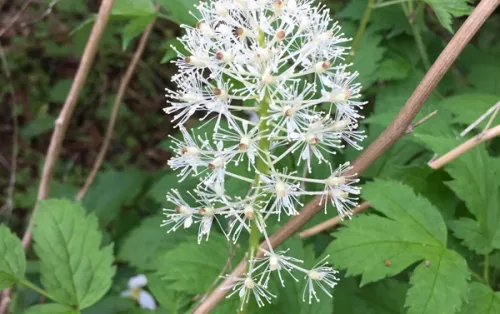Back to Glossary
Red Baneberry
Actaea rubra
Red Baneberry is a perennial woodland plant that typically grows 1.5 to 3 feet tall. It features compound leaves that are deeply divided and toothed, creating a lush, textured green backdrop in shady areas. In late spring, it produces small, white clusters of flowers. By mid to late summer, these flowers develop into bright red berries that stand out against the foliage. While beautiful, the berries are toxic to humans if ingested, though they provide food for birds and small mammals. Red baneberry prefers rich, moist, well-drained soil in partial to full shade, making it ideal for woodland gardens and shaded borders.
Details
Height24” - 24”
Spread20"
Bloom SeasonApril – May
Soil Types
Loam
Sand
Soil Moisture
Medium
Moist
Wet
Sun Exposure
Full Shade
Range Map
Available
Not available
Ecological Benefits
Maintenance Tips
- Thrives in moist conditions; water regularly to maintain evenly moist soil.
- Little pruning is necessary. Remove any dead or damaged stems in early spring to maintain plant health and appearance.
- Prefers rich, loamy soils; amend with organic matter to improve fertility and drainage.
- Apply a layer of organic mulch to conserve moisture, suppress weeds, and keep the roots cool.
- Monitor for pests and diseases, although it is generally problem-free. Be mindful of the plant's toxic nature when placing it in gardens accessible to children and pets.





